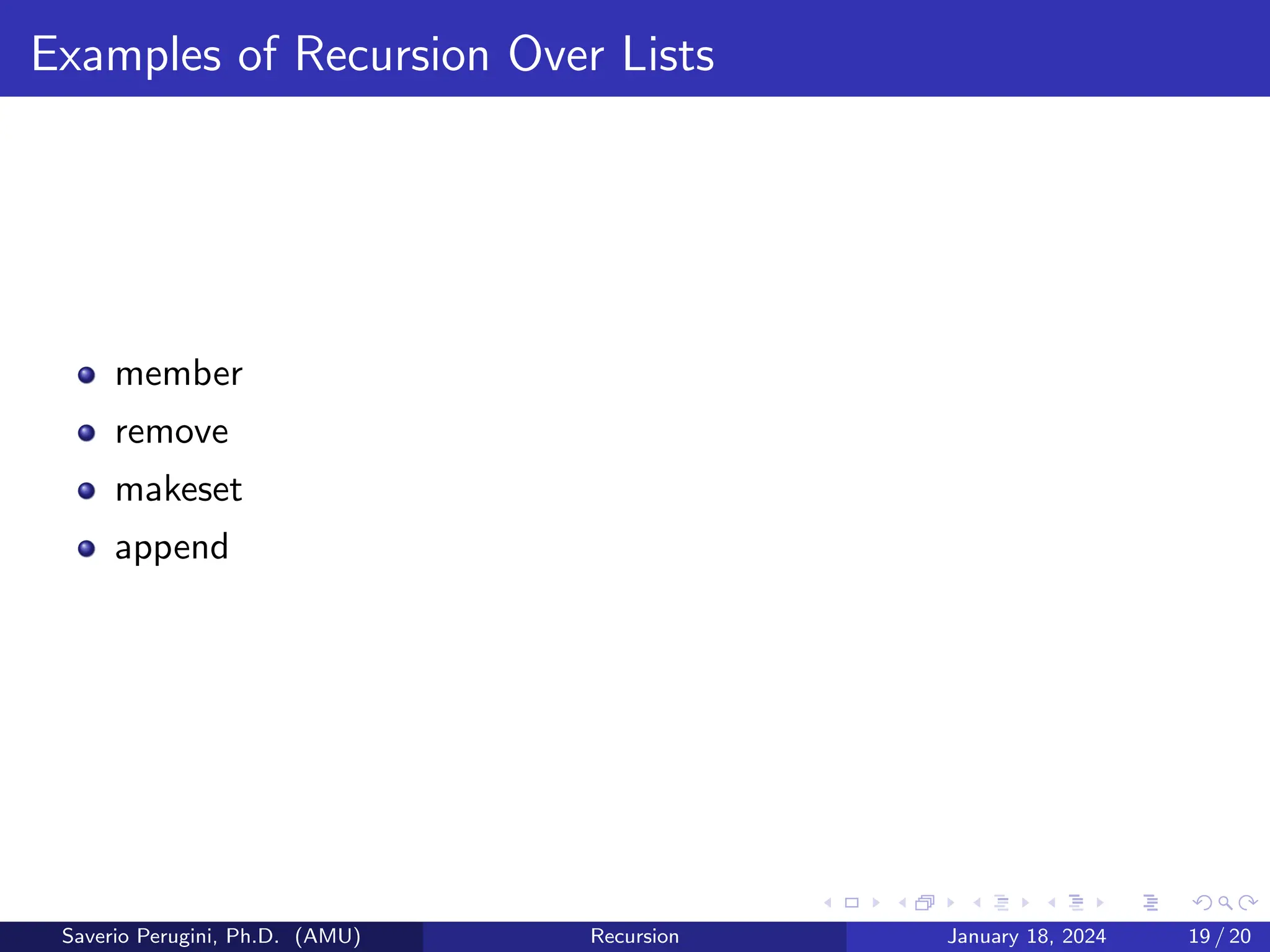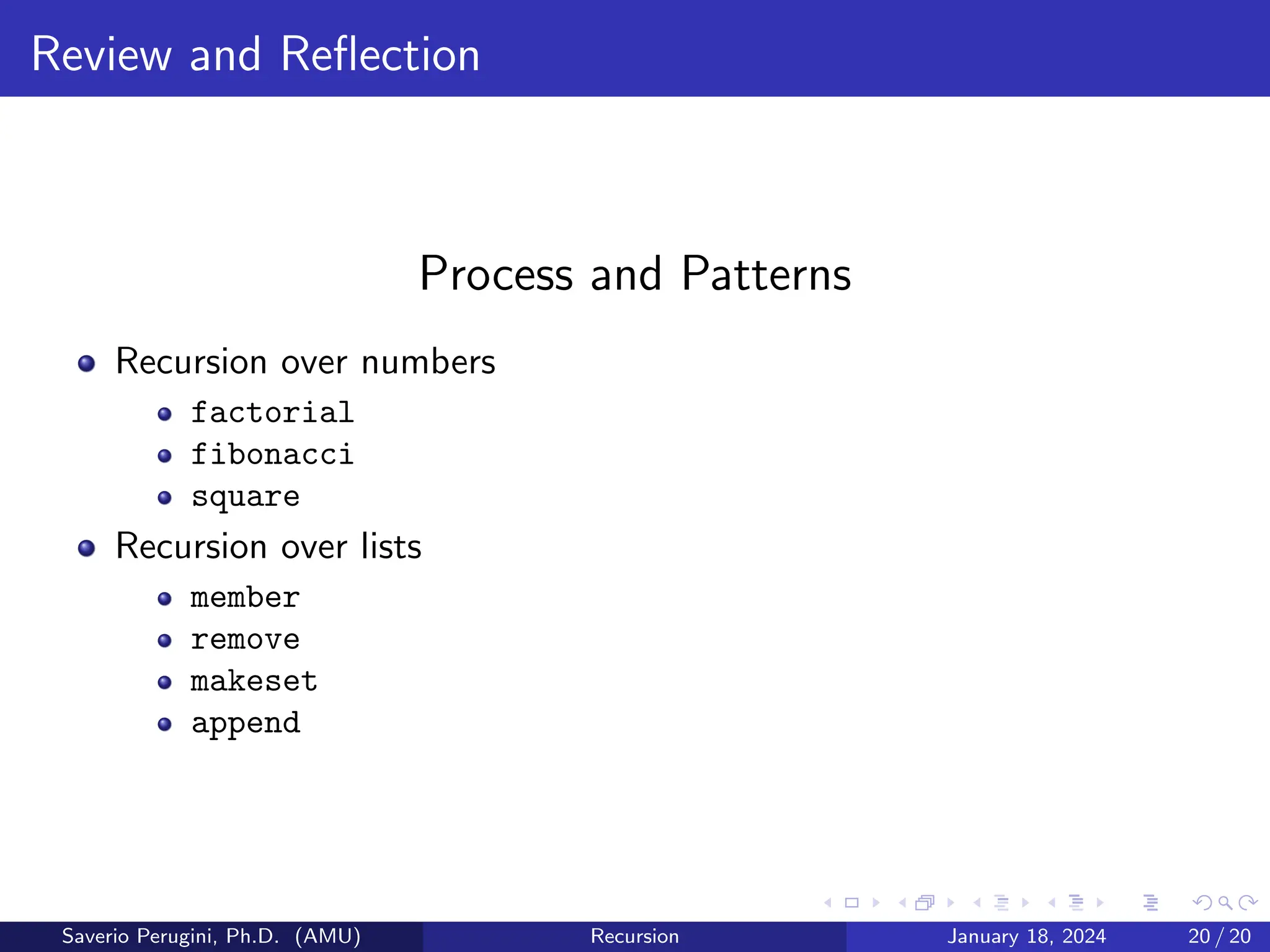This document discusses recursion, providing examples of recursive functions over numbers and lists. It explains recursion as solving a problem by defining a function in terms of itself, with each call reducing the problem size until a base case is reached. The steps to define a recursive function are given as determining the base case(s) and extending the solution of smaller cases. Examples of recursively defined functions include factorial, Fibonacci numbers, and list operations like member and append. Recursion allows for elegant solutions to problems involving trees, graphs, and other inherently recursive structures.
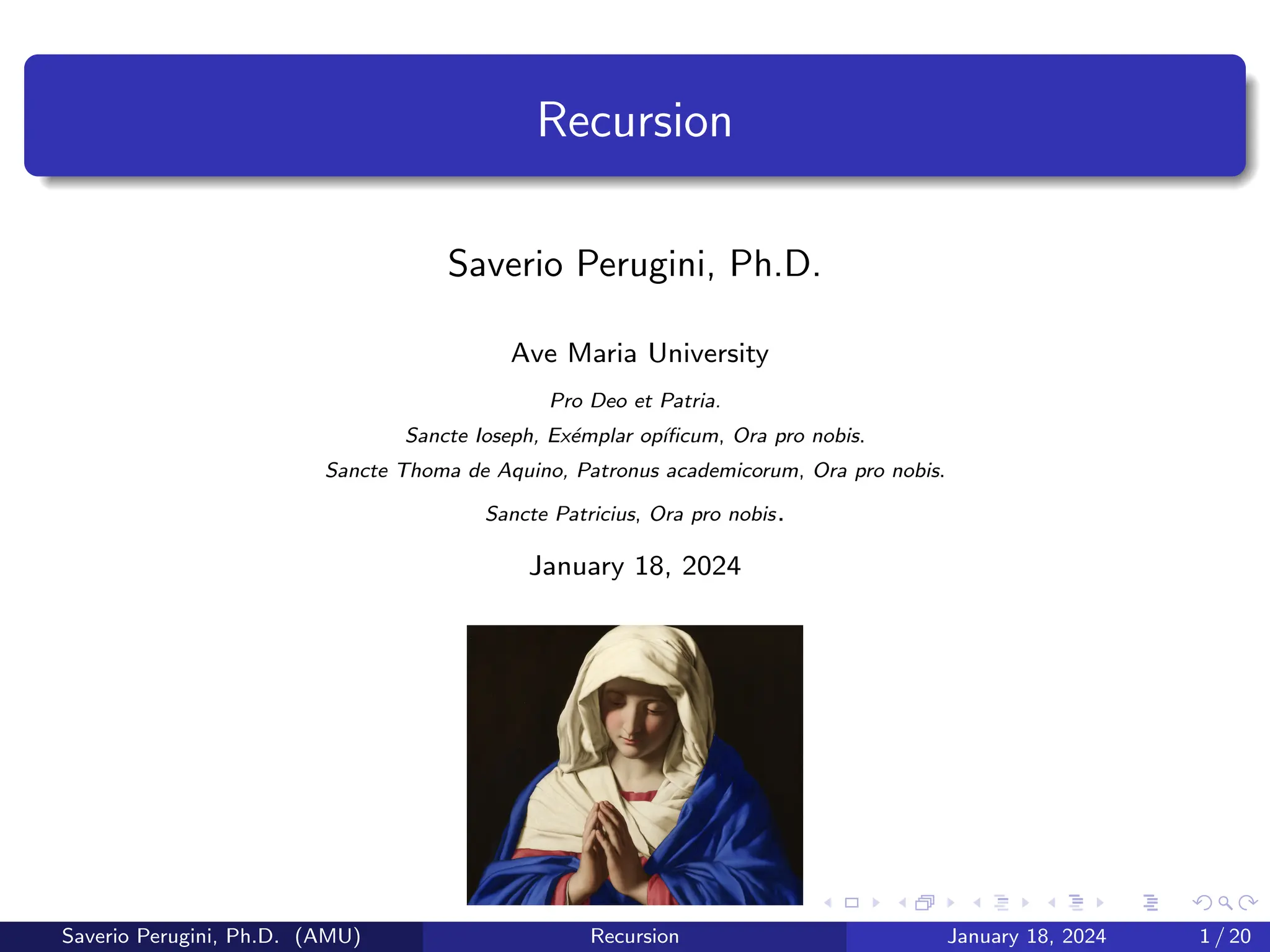
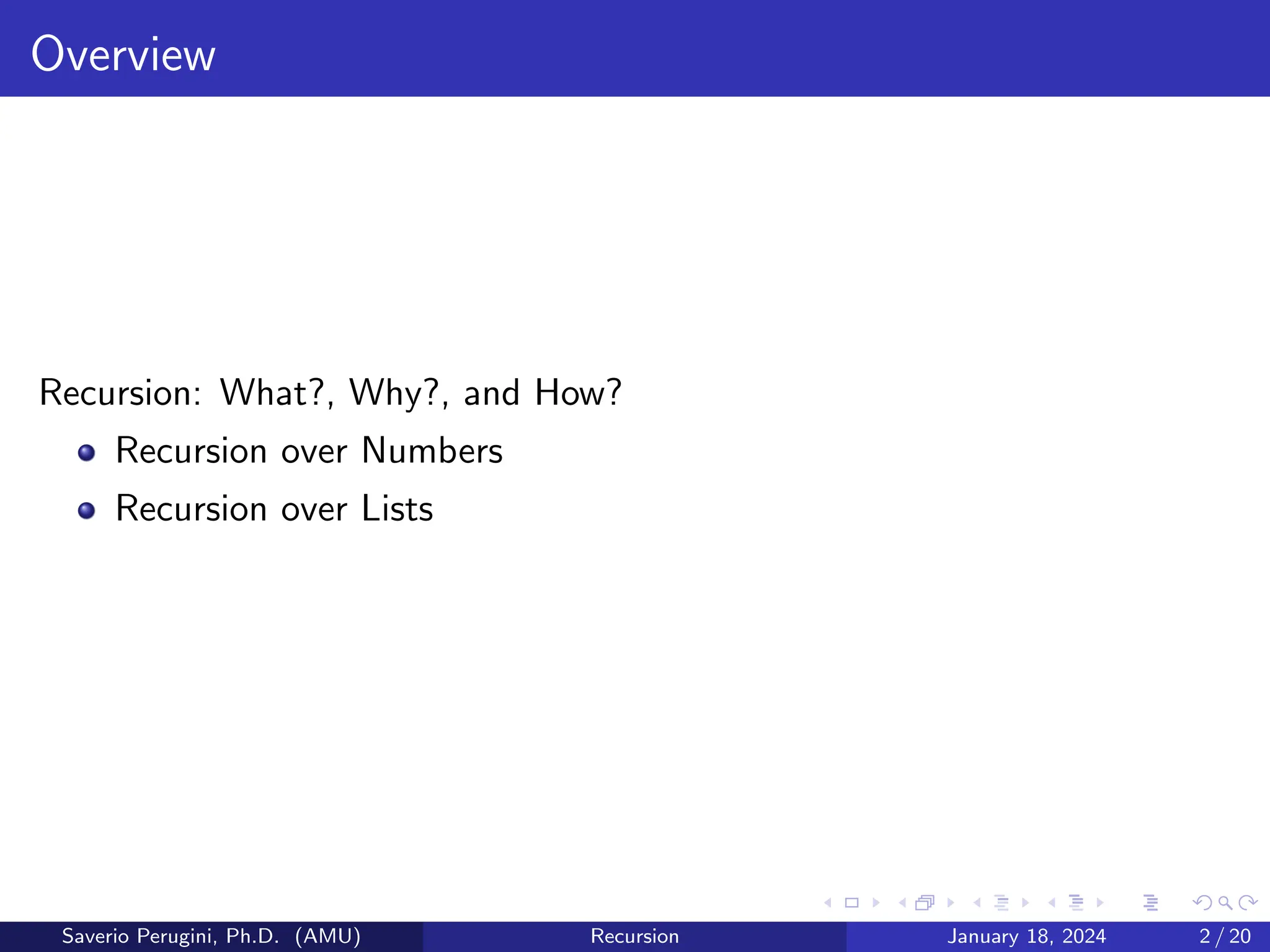
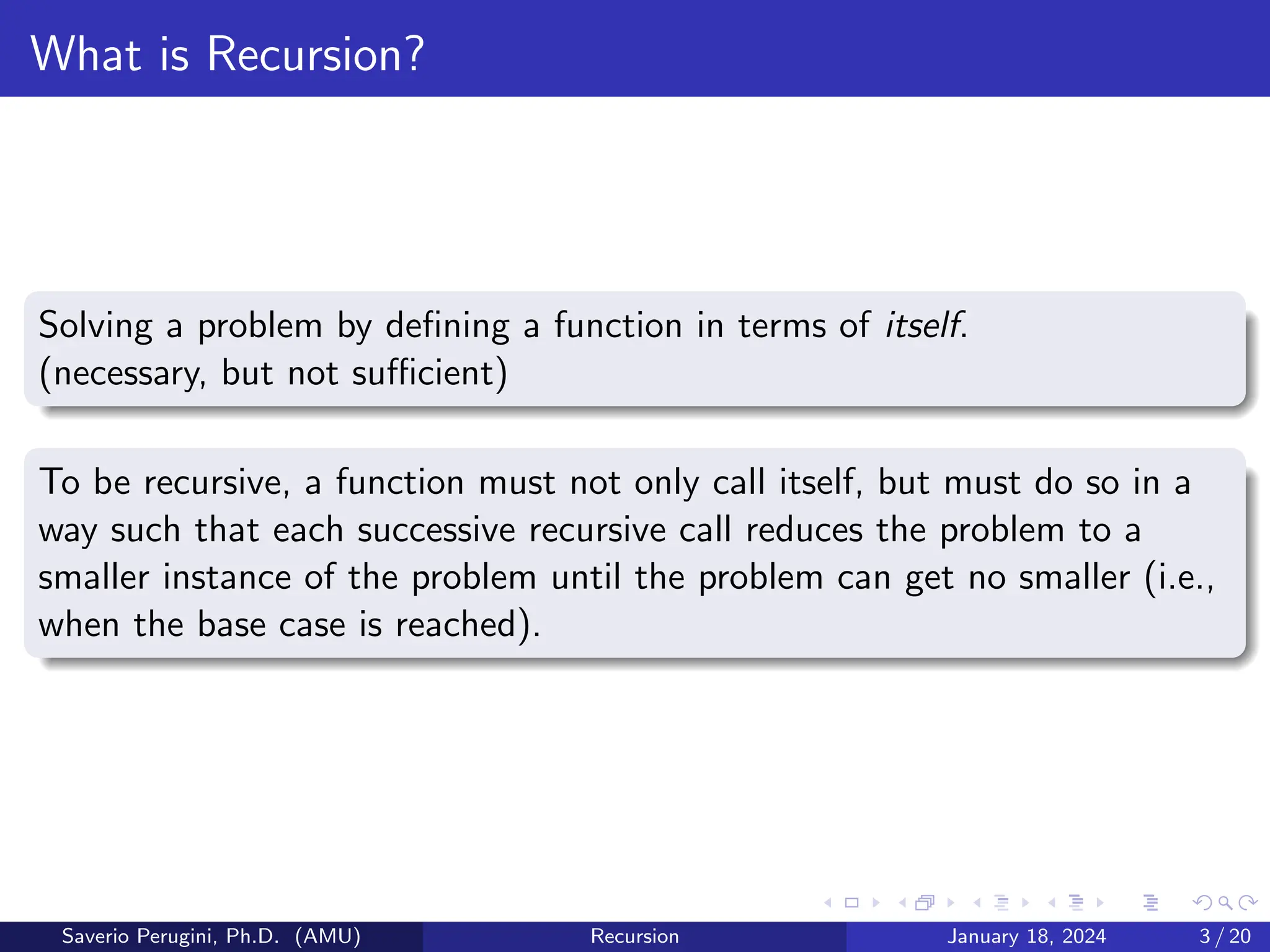
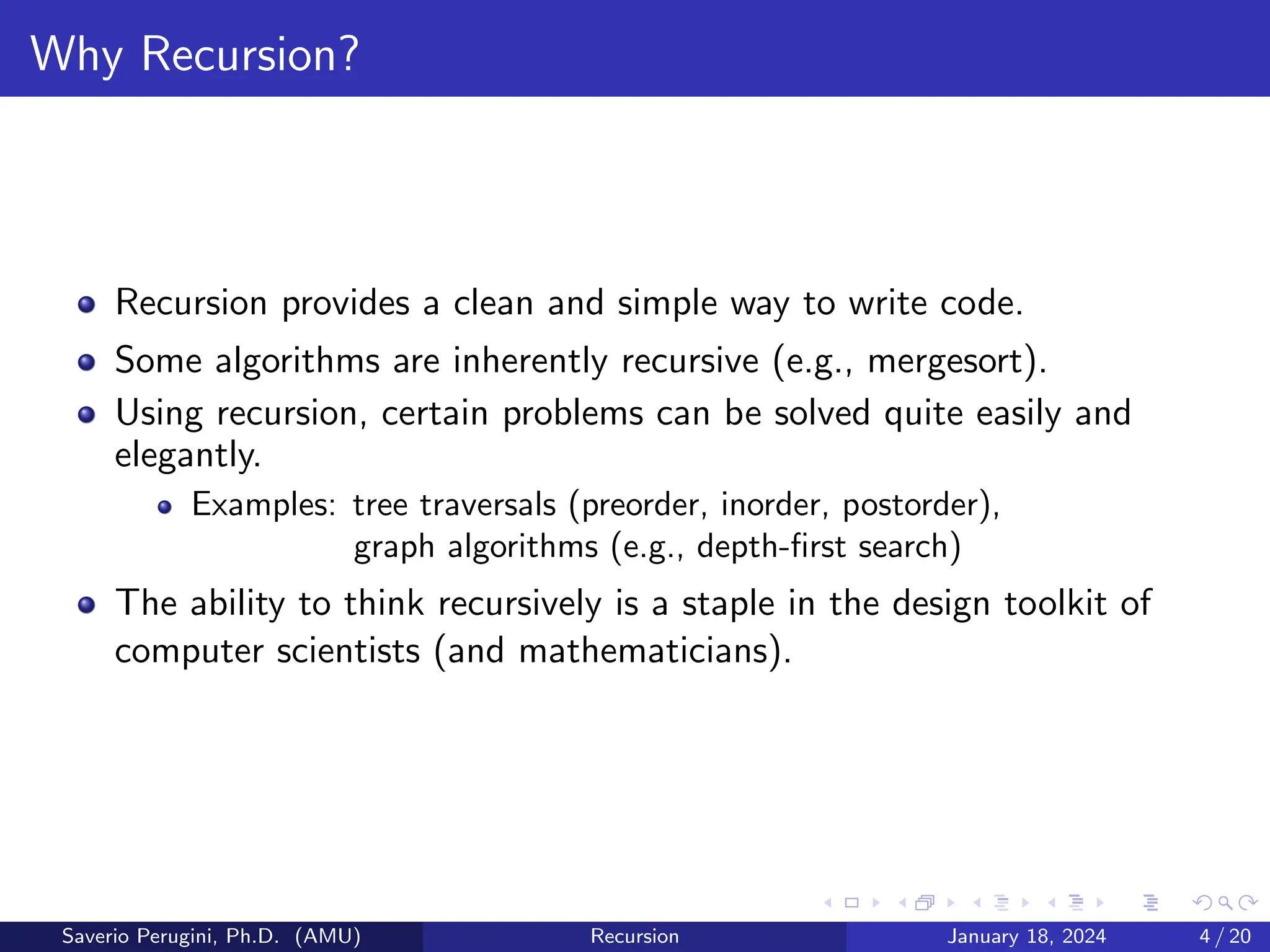
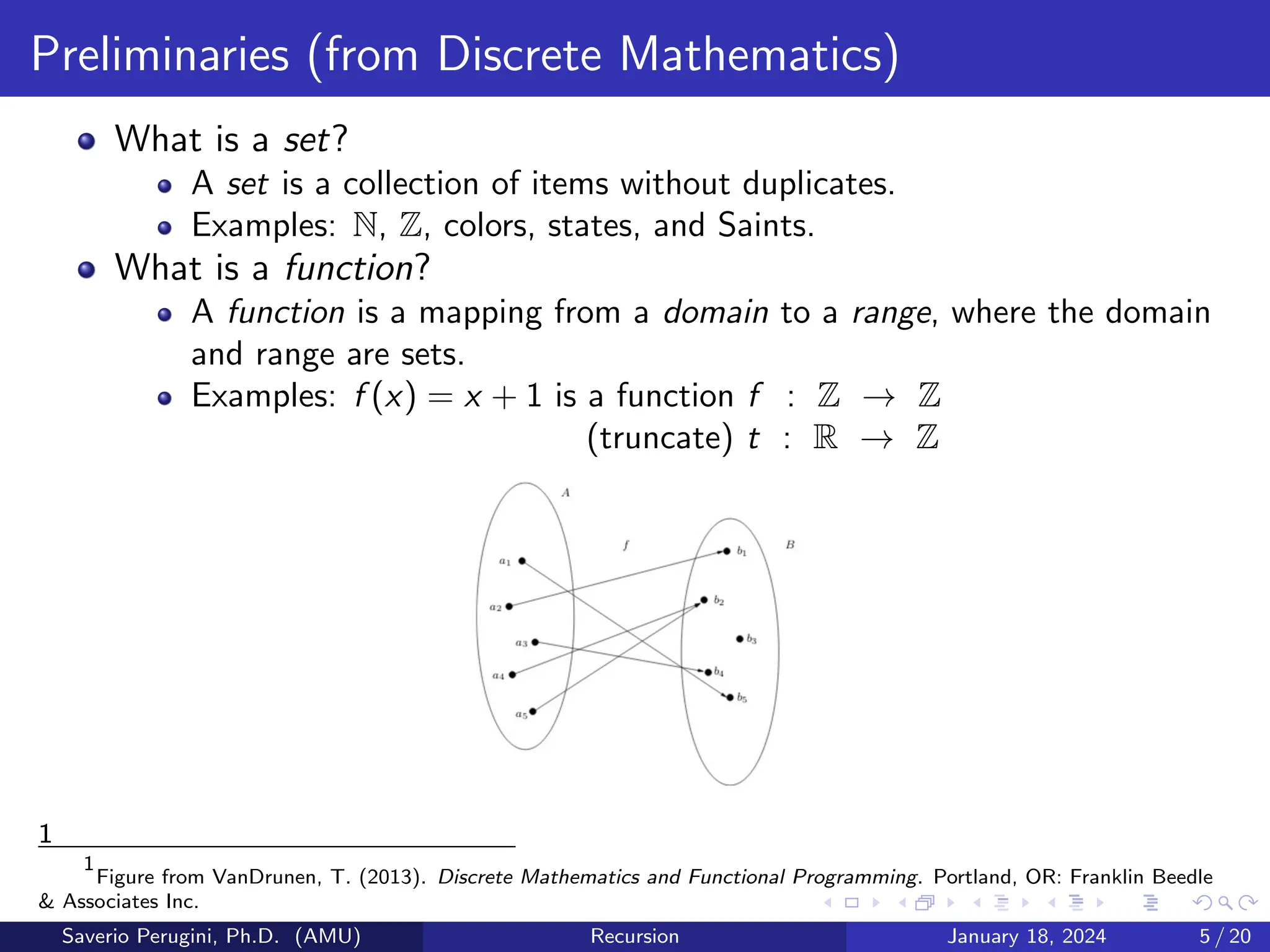
![How to Design a Recursive Function
Step 1: Determine (and solve) the Base Case
The base case is the smallest instance of the problem.
Example: Factorial function f (n) = n!
The base case is n = 0 and f (0) = 0! = 1.
Step 2: Extend the Solution to Penultimate Case to the Solution to
the Ultimate Case
a. Assume the penultimate [(n−1)th] instance of the problem is solved.
b. Demonstrate how to extend that (n−1) solution to the solution to the
nth instance of the problem.
Saverio Perugini, Ph.D. (AMU) Recursion January 18, 2024 6 / 20](https://image.slidesharecdn.com/recursion-240119000043-67d3ec78/75/Recursion-in-Python-6-2048.jpg)
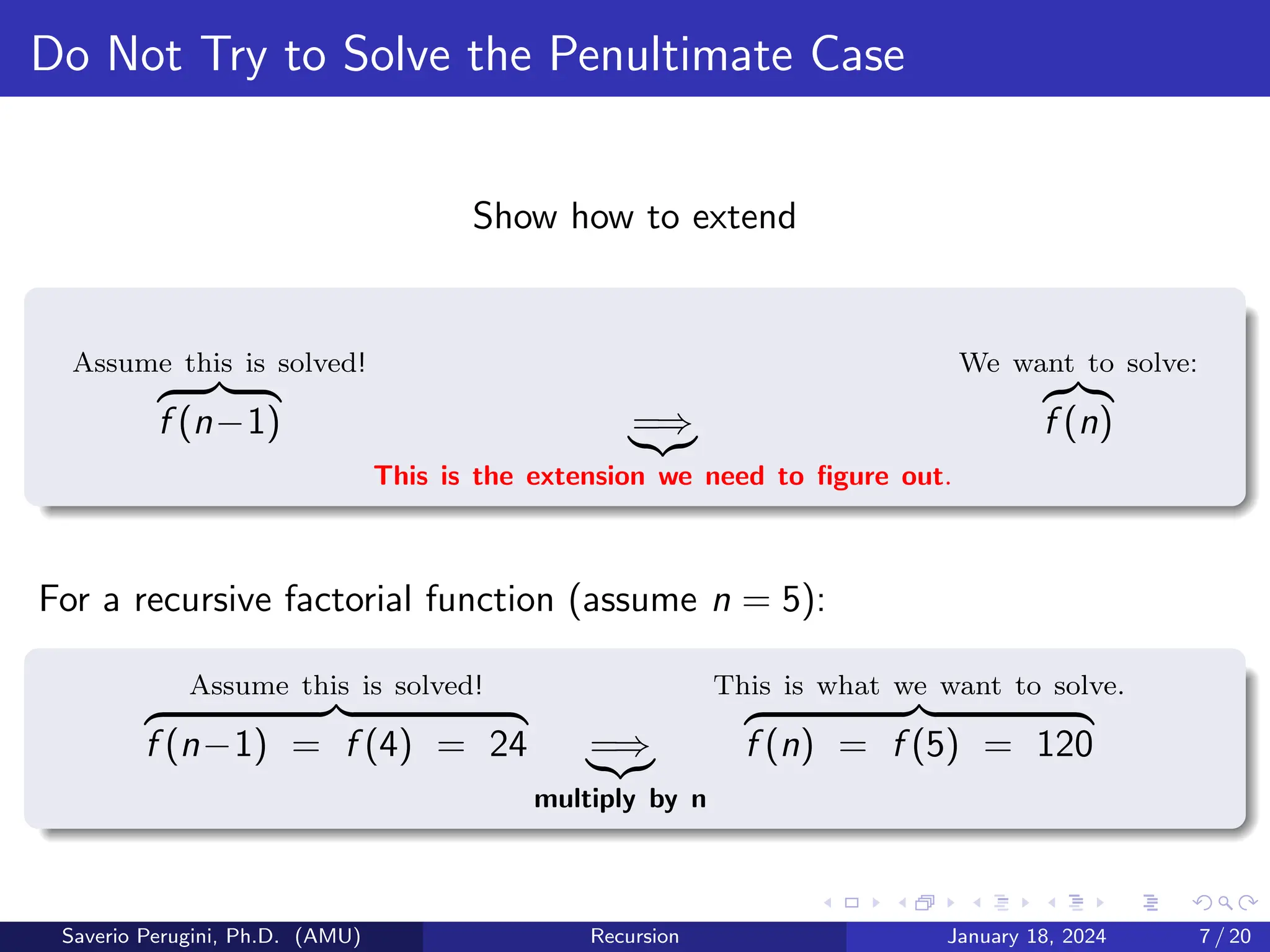
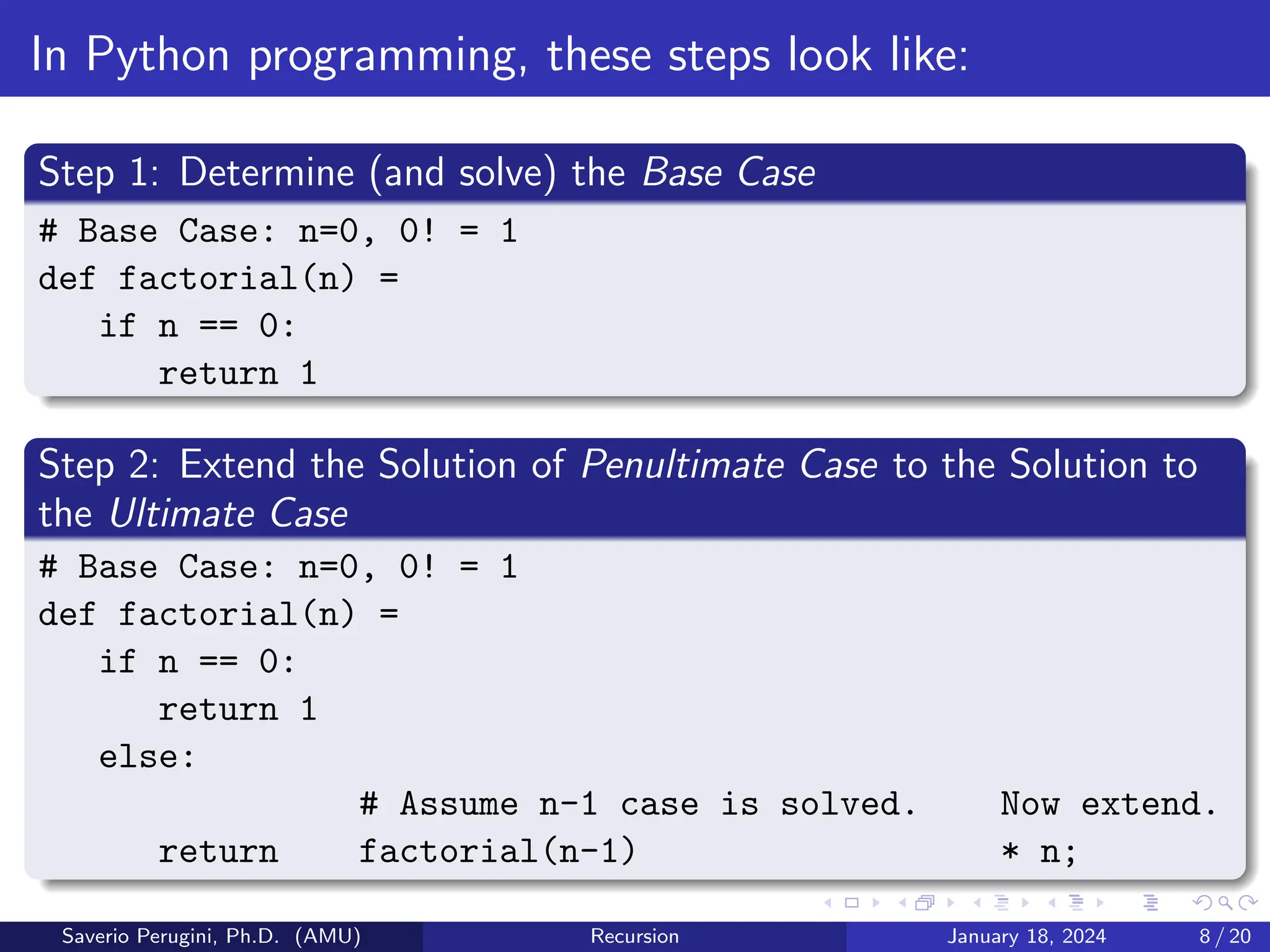
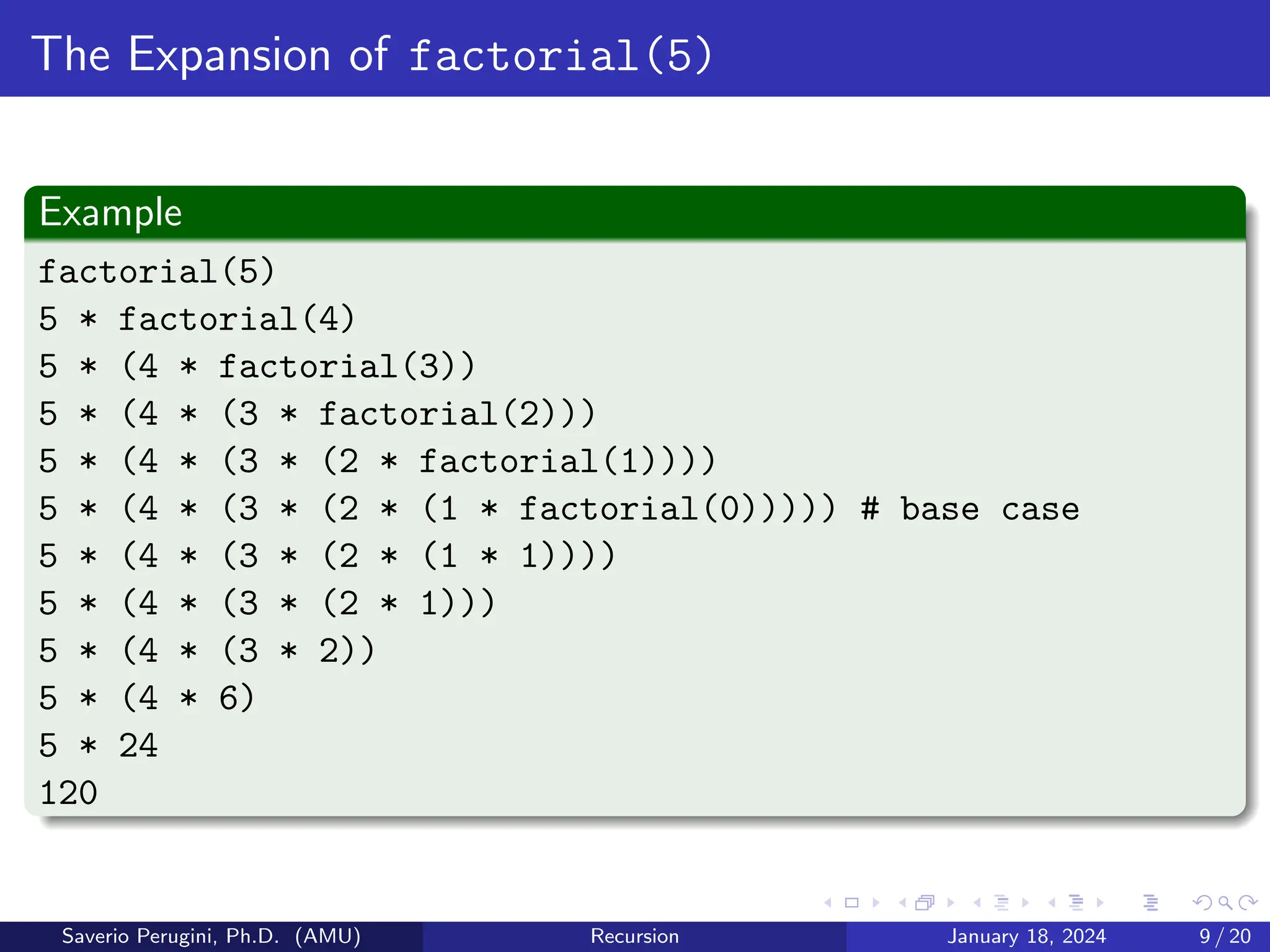
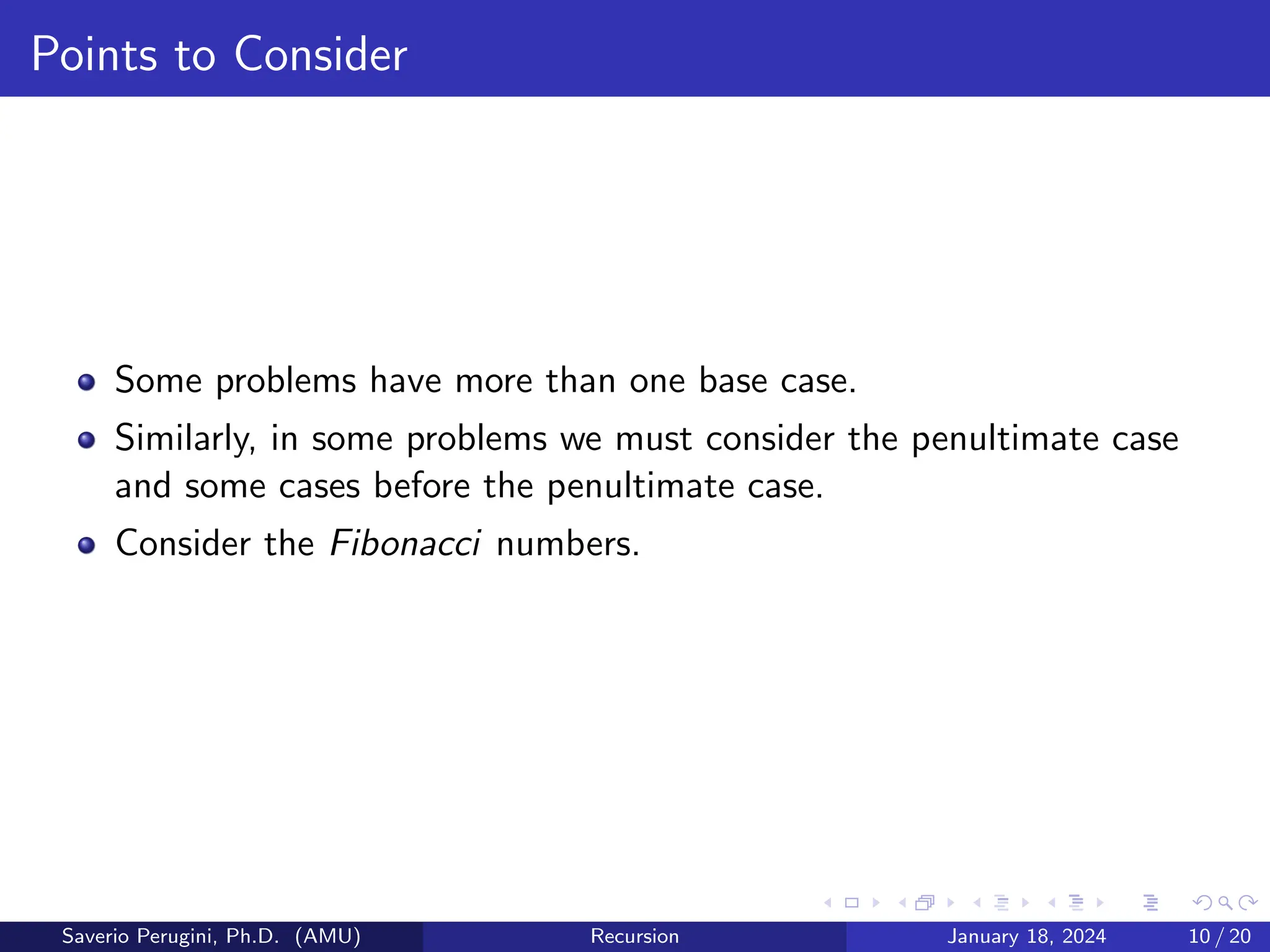
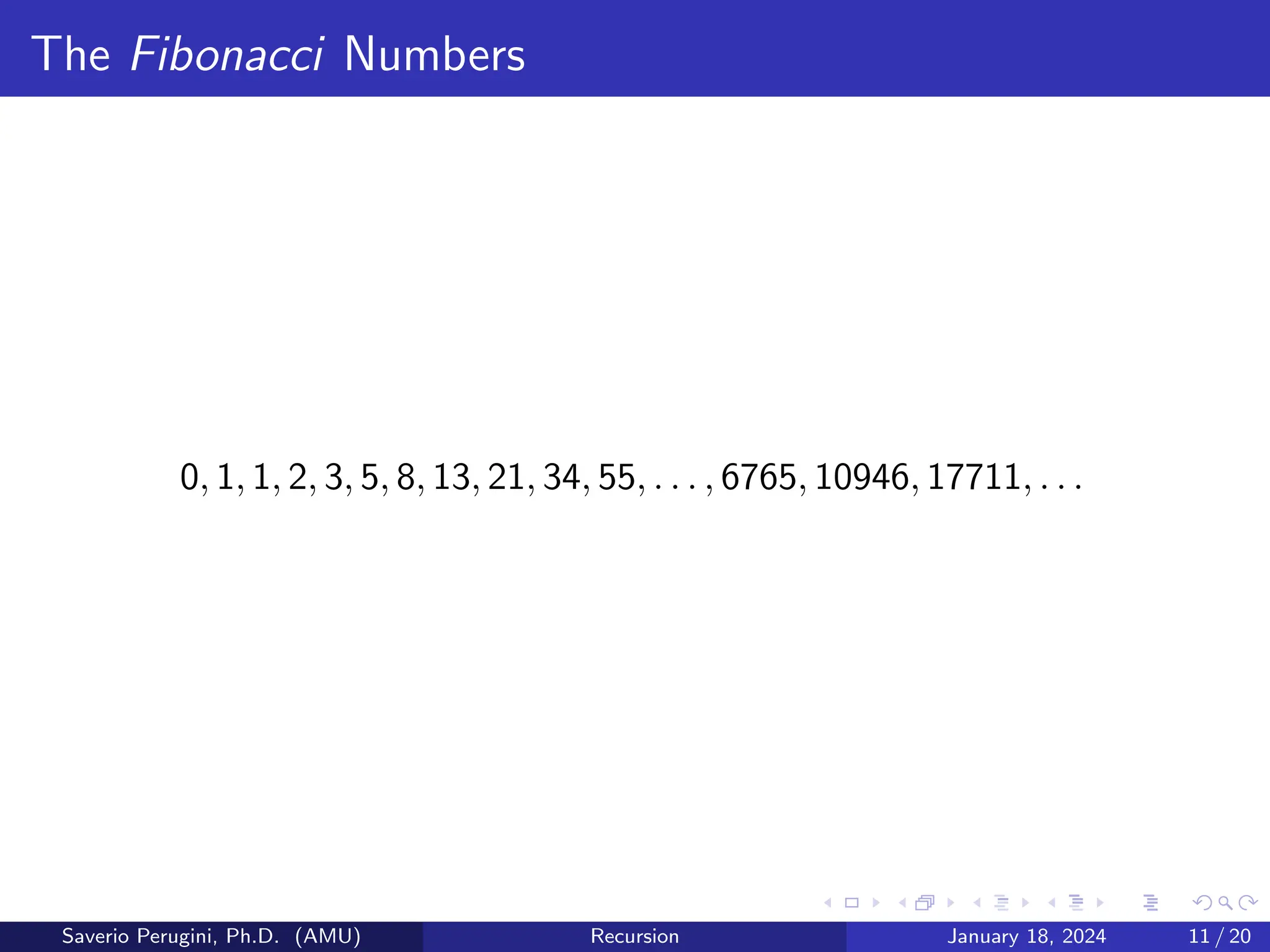
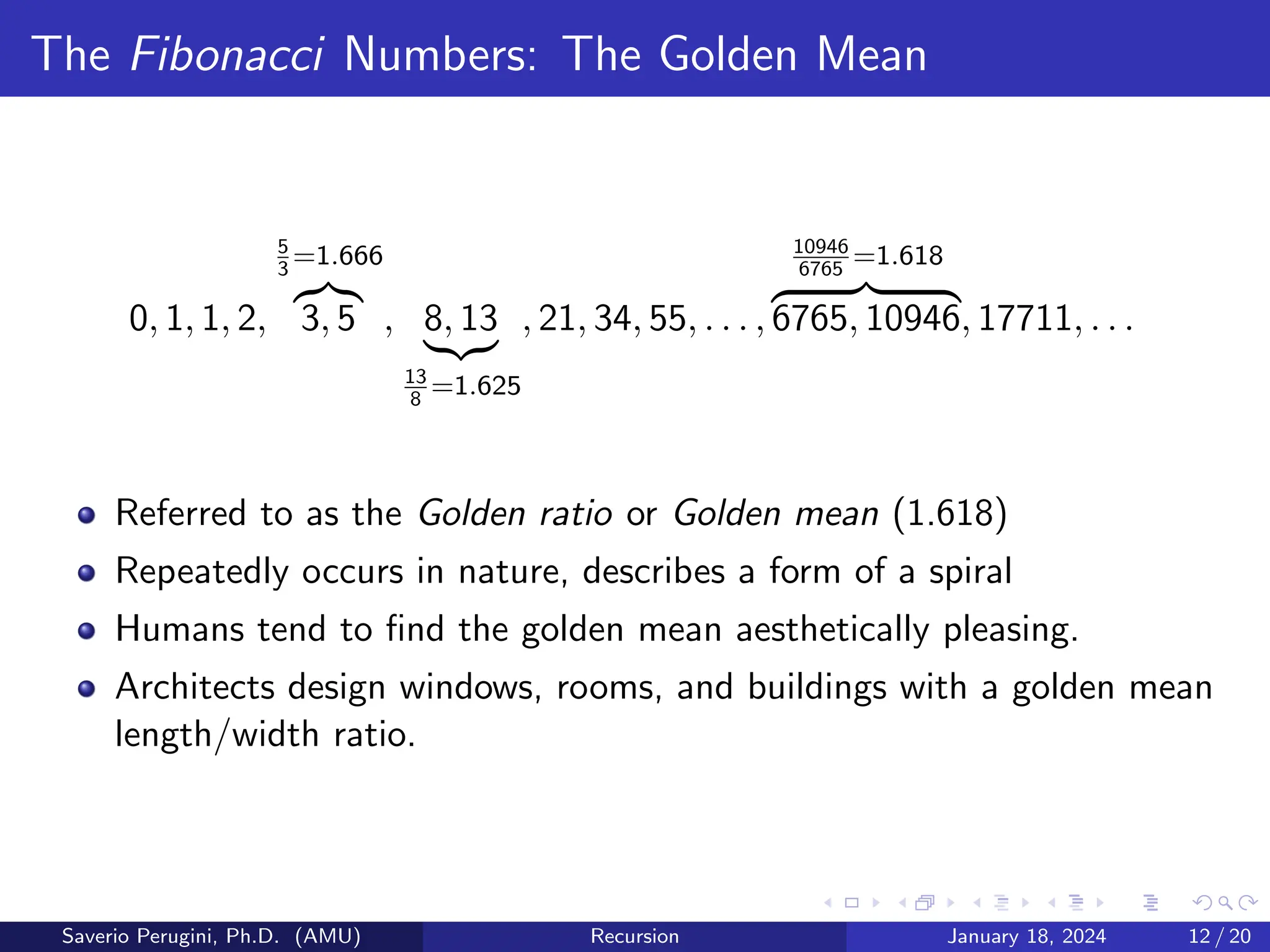
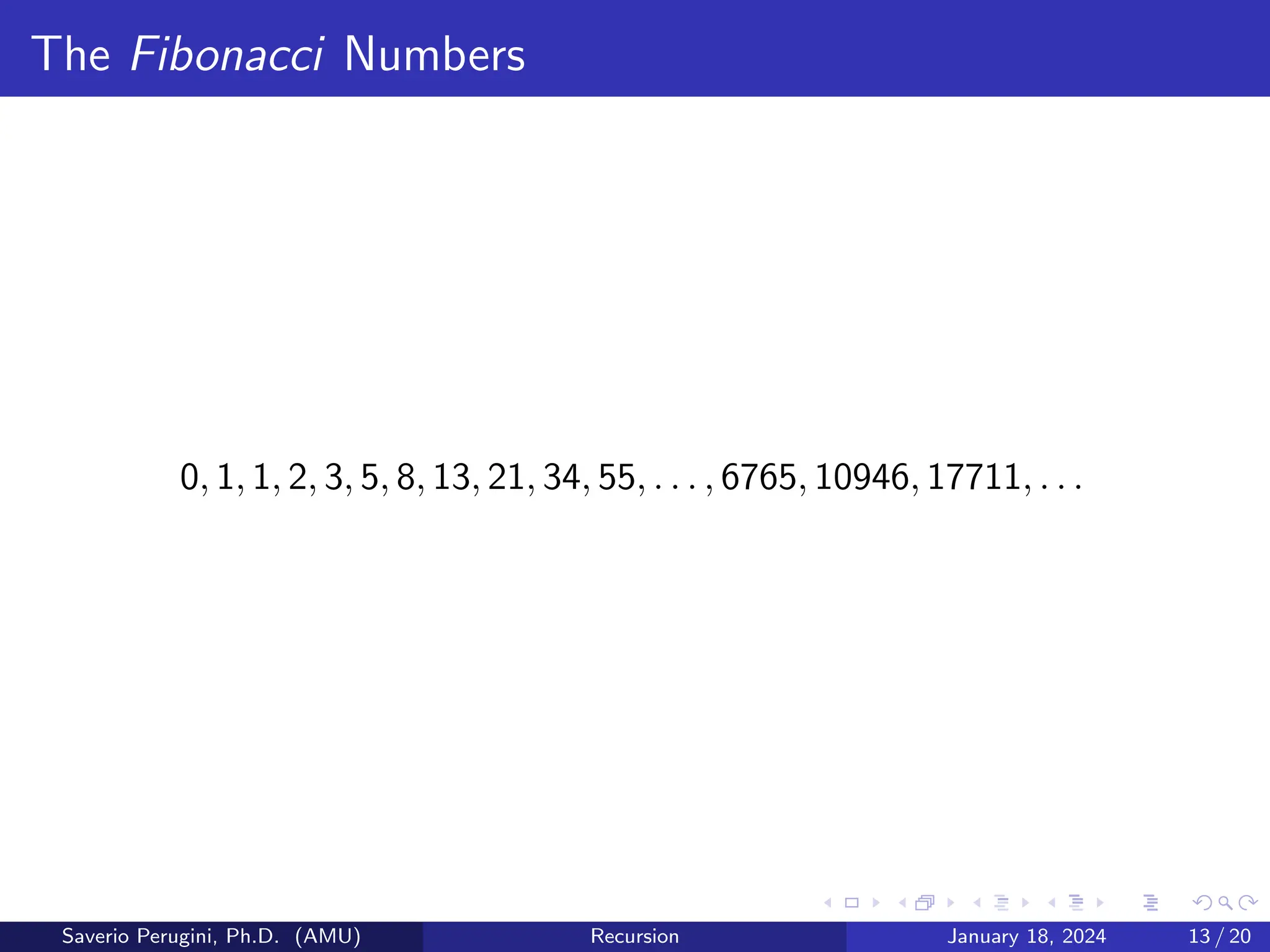
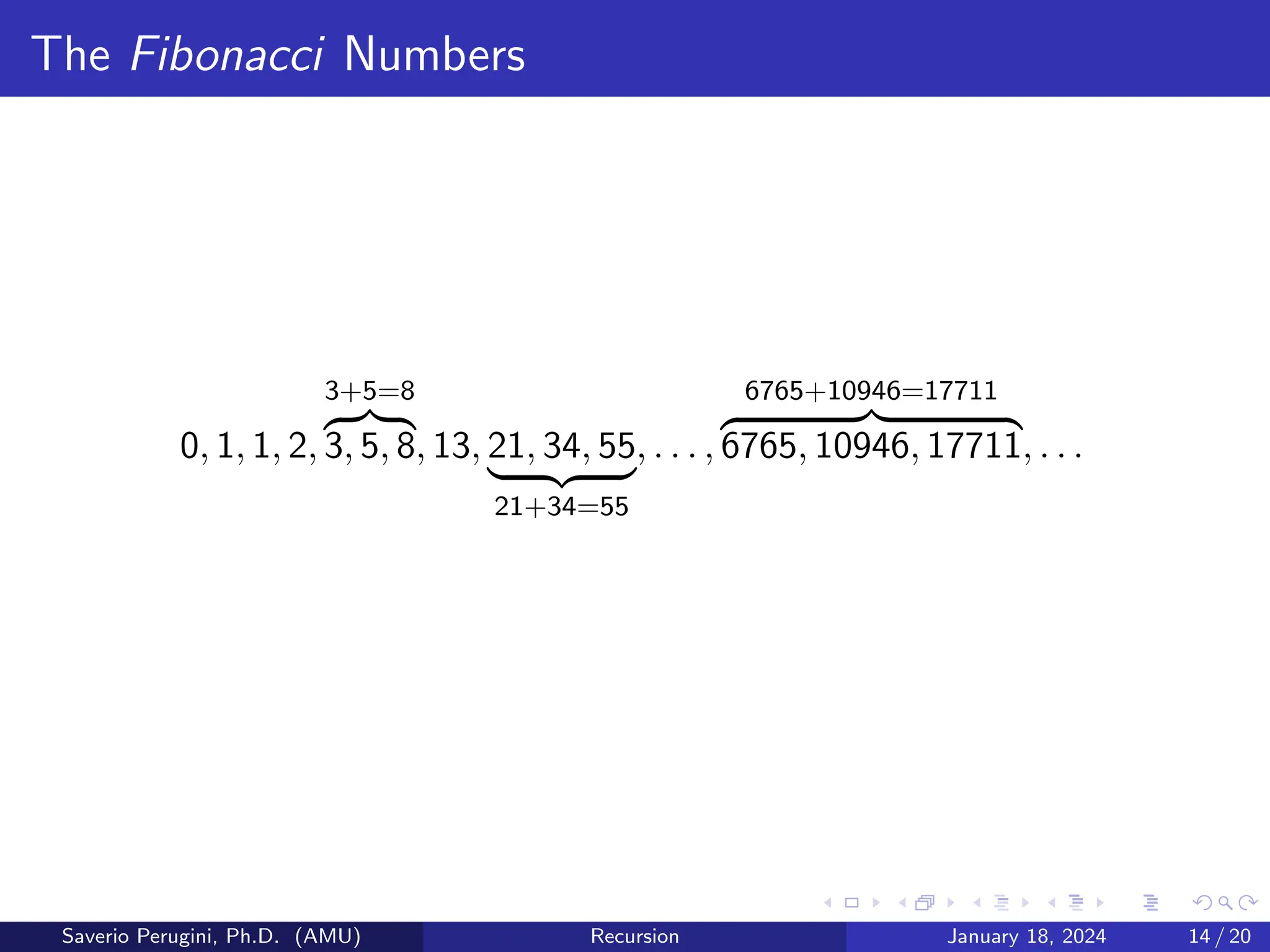
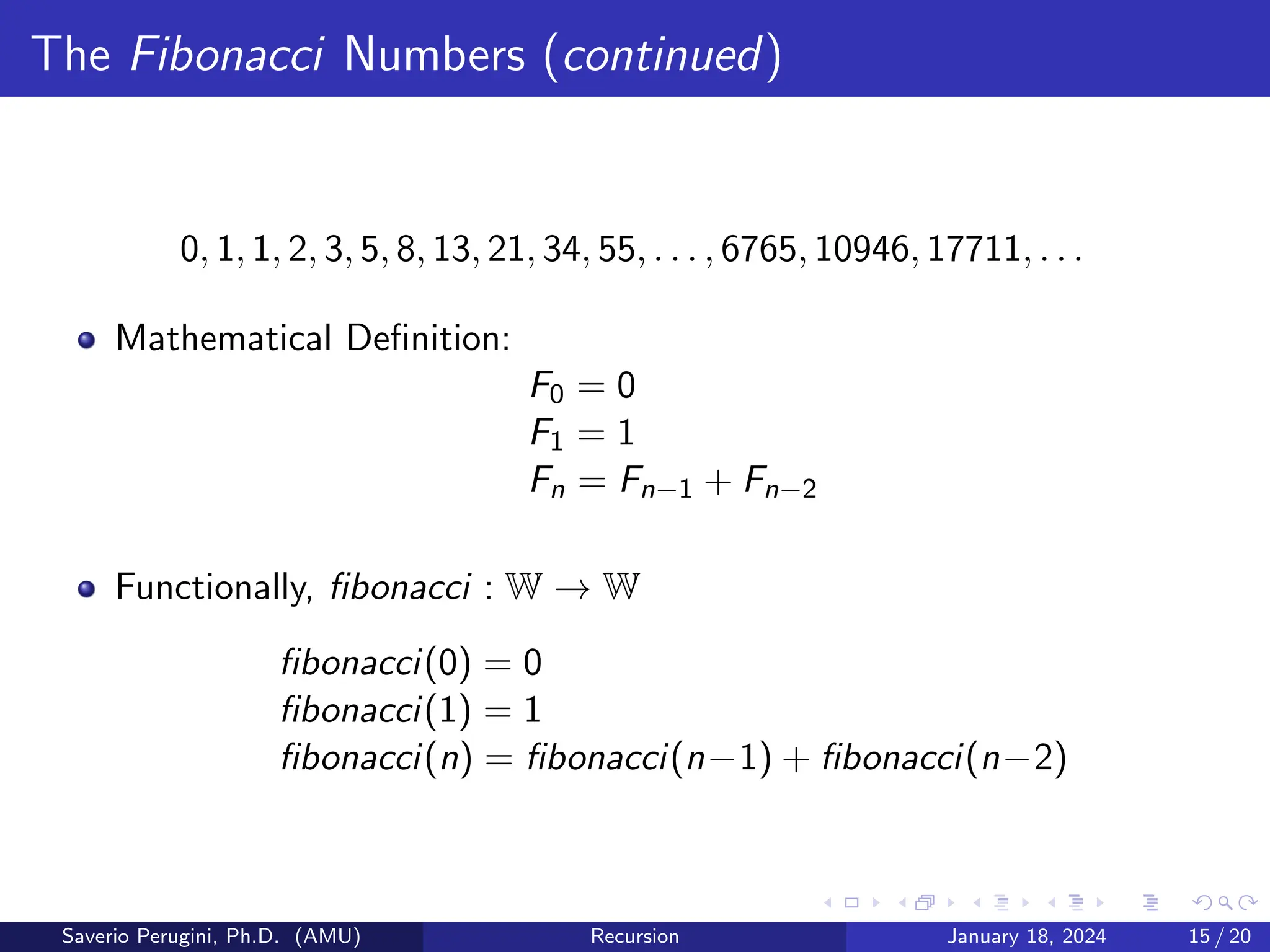
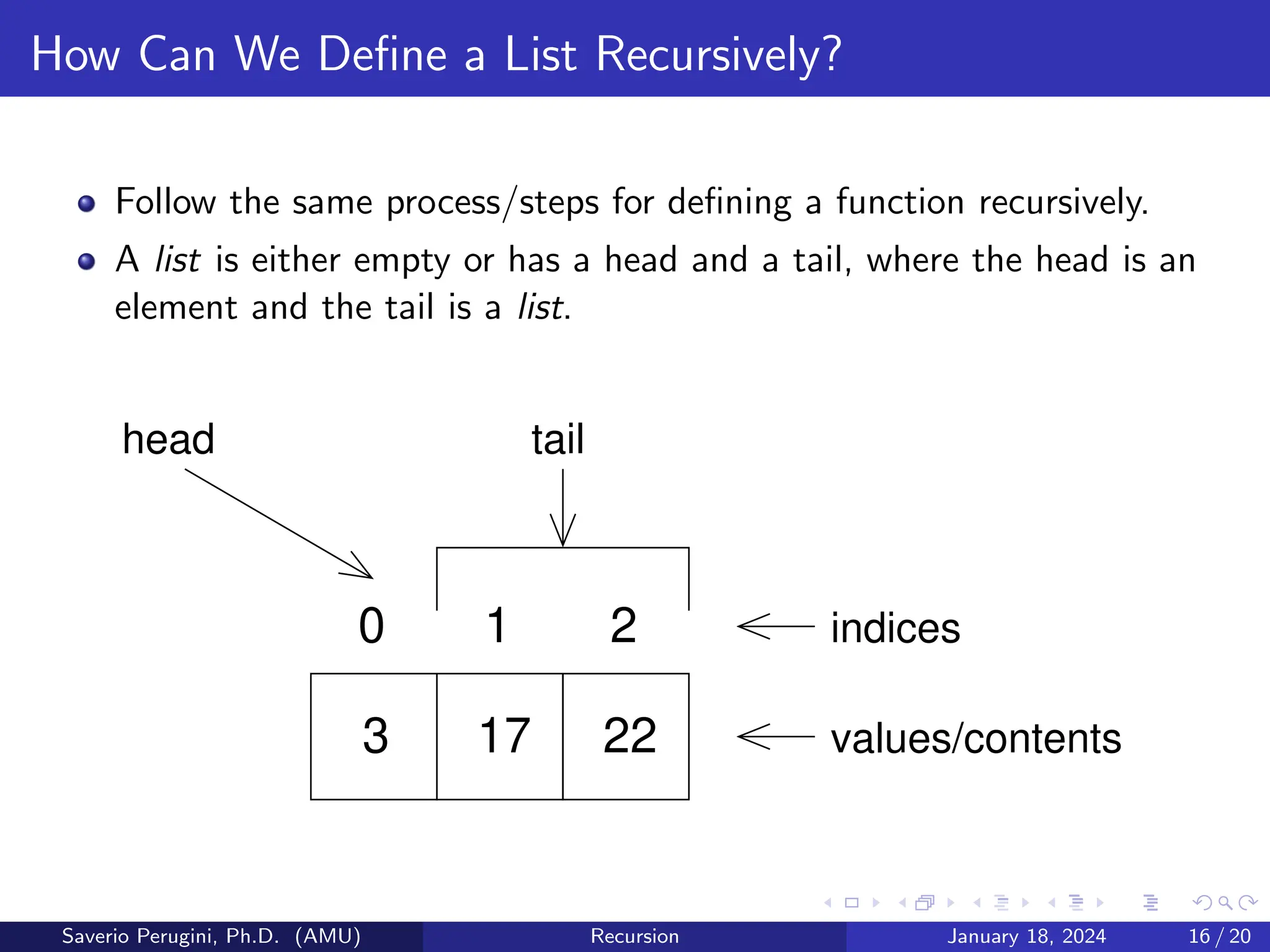
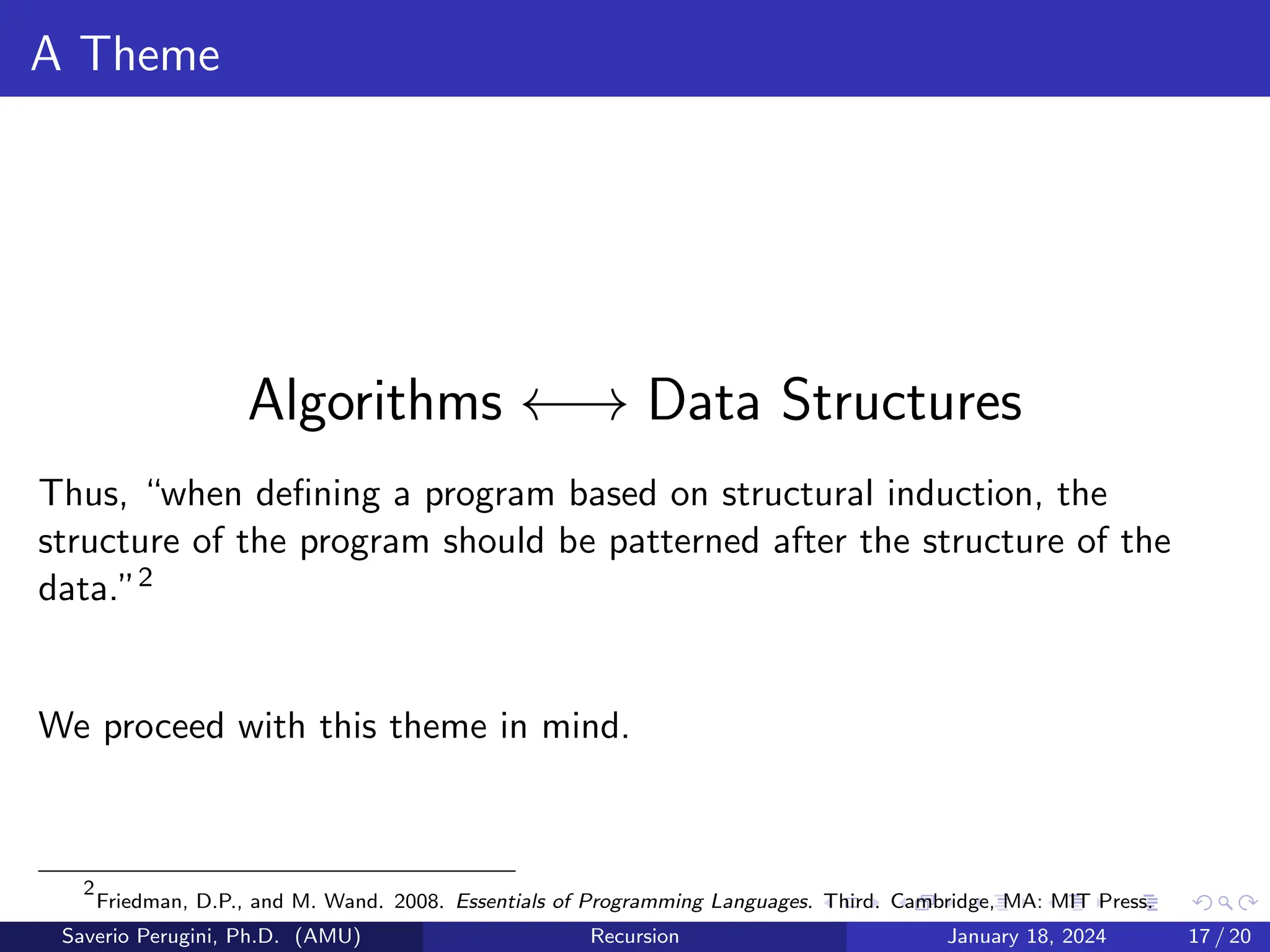
![Some Helpful Python List Idioms
Python Semantics
[] the empty list
L[0] the head of list L
e.g., if L = [3,17,22], then L[0] returns 3
L[1:] the tail of list L
e.g., if L = [3,17,22], then L[1:] returns [17,22]
len(L) returns the length (i.e., size) of list L
e.g., if L = [3,17,22], then len(L) returns 3
L1 + L2 appends lists L1 and L2
e.g., if L1 = [3,17,22] and L2 = [3,18,22], then
L1 + L2 returns [3,17,22,3,18,22]
e in L returns True if element e is in list L and False otherwise
e.g., 17 in [3,17,22] returns True and
18 in [3,17,22] returns False
Saverio Perugini, Ph.D. (AMU) Recursion January 18, 2024 18 / 20](https://image.slidesharecdn.com/recursion-240119000043-67d3ec78/75/Recursion-in-Python-18-2048.jpg)
